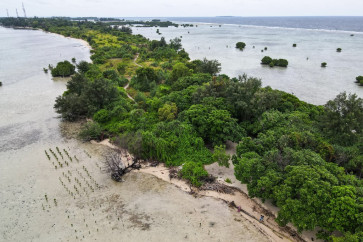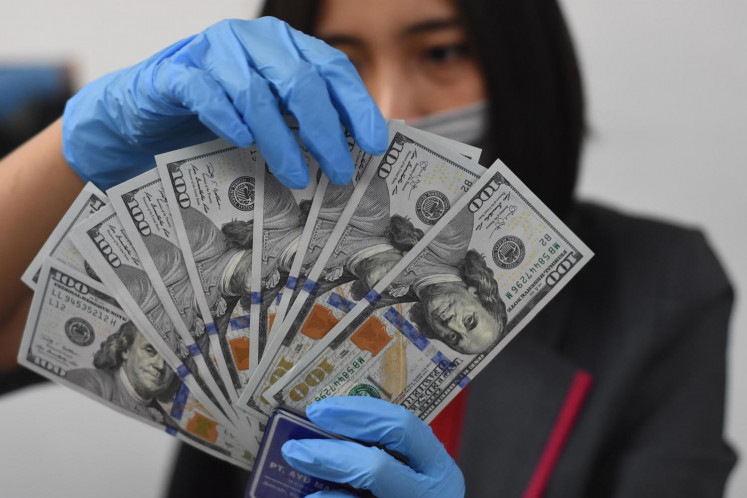It takes a big byte to improve health care
The annual Tourism Report 2014 from Singapore was published in November 2015
Change Size

T
he annual Tourism Report 2014 from Singapore was published in November 2015. Indonesia accounted for 30 percent of all tourist arrivals in Singapore, with 16 percent of the visits being for medical reasons, by far the highest of any foreign nationality visiting Singapore.
In 2014, total global revenues received from medical tourism reached S$832 million, with Indonesia contributing S$463 million.
This number increased to S$632 million out of a total of S$994 million in 2015. A report in this newspaper attributed the high number of medical tourists to Indonesians' lack of trust in their own doctors and hospitals.
With a growing middle class, Indonesians demand better public services as seen in other advanced emerging markets.
If this demand is not met, Indonesians will take their money to countries that can provide this. Countries such as Malaysia, Singapore and Thailand are actively promoting this exodus of Indonesians by providing tourism medical packages, also for lower income families.
The most important reason for going abroad is access to world-class doctors, specialists and surgeons, which due to the Indonesian regulatory framework has become virtually impossible to provide locally.
The difficulty of recruiting and retaining world-class Indonesian doctors, especially in peripheral and remote areas due to widely varying paychecks nationwide, is the main complaint of hospital administrators.
Second, access to novel therapies and diagnostics for all socioeconomic classes is underdeveloped in Indonesia.
The emotional driver for seeking medical care outside of Indonesia has been described as politically derived frustration and lack of service.
Establishing a more unified regulation as well as a change in mentality from hospital to patient-centered service would greatly benefit the Indonesian healthcare sector.
The lack of confidence is also a result of Indonesian doctors being overloaded. The World Health Organization (WHO), which recommends a 1:600 doctor-patient ratio, reported 2.1 doctors/10,000 patients for Indonesia, a decrease of 9 percent over the last 10 years and one of the lowest in Southeast Asia.
___________________________________
Home-care solutions will reduce the pressure on general practitioners and hospitals.
The number of midwives and nurses is also the lowest in the region, so Indonesia needs to increase academic output in the healthcare sector. The 2014 report of the Organization of Economic Cooperation and Development (OECD) showed 3 percent of gross domestic product has been spent on healthcare compared to the OECD average of 9.3 percent. Therefore, both accessibility and spending are underperforming compared to neighboring countries.
Indonesia has become 'comfortable' with the way things are organized; changing this will not be easy. The intrinsic logistics problems due to the size and geographical challenges are clearly an obstacle.
Novel technologies and diagnostics could be adopted, but without the proper framework to deal with all the data this will only lead to more frustration for patients.
However, one of the upcoming technologies that could be relatively easy to implement is remote diagnostics combined with centralized patient management systems.
The development of remote diagnostics and accompanying patient-management systems has been exponential over the past years. This could have great implication for the improvement of our health care. The technologies make use of mobile phones and results are sent to the healthcare provider for analysis.
Examples of remote, mobile phone-based diagnostic tests are for detection of HIV, tuberculosis and malaria. Published in 2015, the group of Prof. Sia from Columbia University introduced such a device for HIV by using one drop of blood. Results were obtained in less than 15 minutes, with 92 percent accuracy.
Additionally, cheap adaptations of the camera, less than US$1, can turn a phone into a microscope for detection of malaria parasites in blood. One click provides visual evidence that can be sent to a medical hub for advice on treatment and patient care.
The more advanced CellScope can make short movies and can screen blood automatically for a large variety of blood parasites and functions as a high-end light microscope.
The technologies require a single drop of blood or sputum. CellScope just launched a mobile phone adapted 'otoscope' for visual analysis of ear infections. Another technology, Colirometrix, can be used on both Android and iOS systems and measures blood glucose levels, pH and hemoglobin without the need of physician consultation.
Anyone who knows how to work with a mobile phone can use the device. After filling in the patient data, the diagnostic results are sent to a remote physician for evaluation who sends back treatment recommendation.
This means physicians will remain based in central medical hubs where the data from the entire country will be gathered by transmission over the mobile network. Could this be feasible in Indonesia? Yes, it is currently being tested on a small scale.
Mobile Care (Moca) is a pilot project providing a comprehensive patient-management and clinical data platform for Indonesia. The study is being performed in collaboration with Gadjah Mada University and Ciputra University. The use of the mobile phone and open-source software makes this technology available for all income classes in any location, as long as there is a connection to the mobile network, either Wi-Fi or GPRS.
The application can send all clinical data, such as interviews, videos, X-rays, patient history and diagnostic test by phone. This could particularly impact post-care and follow-up of patients, improving patient satisfaction.
Additionally, home-care solutions will reduce the pressure on general practitioners and hospitals. Nationwide implementation will require training on medical information and big data technicians to deal with the large amount of patient data.
The combination of remote diagnostics and tele-patient-management systems will improve the quality of health care in Indonesia and provide a first step in regaining trust by providing access to personalized care and world-class doctors anywhere in Indonesia.
President Joko 'Jokowi' Widodo has reiterated intentions to boost development of the eastern areas and focus on upgrading the well-being of the poor.
Providing nationwide access to the mobile network and/or the internet will be needed to implement low-cost technologies that will give all Indonesians access to modern day health care. Besides fulfilling a promise to the nation, this will yield international recognition due to adaptation to high-end, 21st century medical solutions.
________________________________
The writer is program manager of bioinformatics at the Indonesia International Institute for Life Sciences (i3L), Jakarta.









